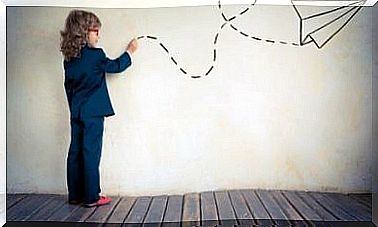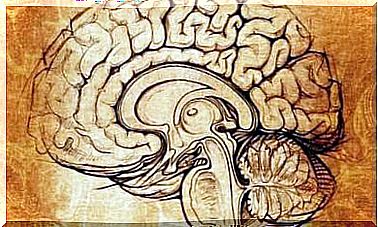The Math Teacher’s Metaphor

There are many instances where your thoughts work against you more than for you. The problem is not the content of the thoughts but the way you arrive at those thoughts. Often they are cognitive errors that stem from limited frameworks in your mind. This can cause problems in your daily life. However, the math teacher metaphor can help with this.
One example of these problematic cognitive boxes is what we call arbitrary inference. Basically it means coming to a conclusion without actually having evidence to back it up. In some cases, there may even be evidence to the contrary.
It can be helpful to draw on your own experiences. However, this process can also cause you to draw some very wrong conclusions about the world around you. Let’s dig a little deeper into this.
How drawing conclusions can be helpful
We have to be honest. Drawing conclusions based on one characteristic or concrete fact can save you time and effort. If someone tells Sandra that Willem likes to do household chores and such, it’s not surprising that she thinks he likes to cook.
So the next time they see each other, she can suggest a dinner where both bring a dish. Willem, however, cannot have the faintest idea how to cook.
Perhaps you want to say that this confusion is perfectly understandable. However, that’s part of the problem. That “normal” experience that you think you are experiencing in different situations can actually cause you to have the wrong view of things.

MBCT: Mindfulness-Based Cognitive Therapy
MBCT is a model that combines two separate practices: cognitive therapy and Jon Kabat-Zinn’s stress reduction program based on mindfulness.
The original purpose of the union of these two practices was to prevent the common relapses after a patient had finished therapy for depression.
There were many studies on residual symptoms and relapse in depressed patients after completing the therapy cycle.
The numbers were alarming. About 70% of people showed cognitive symptoms of depression after the therapy was over. Even the 75% of people who responded well to therapy had five or more residual symptoms.
In general, these symptoms included things like inability to concentrate, lack of focus, difficulty finding words, mental slowness, and difficulty making decisions.
That is why MBCT is so necessary right now. Segal, Williams and Teasdale developed MBCT in 2002. They designed this form of therapy to be done in group sessions. In this session you will work on meditation, feelings and emotions. It’s a way to prevent a relapse.
MBCT helps you and teaches you to focus your attention on other ways of thinking. If you find yourself in the web of depression again, they will help you get out.
MBCT and metaphors
Metaphors are a common tool in MBCT. The goal is to help people change their cognitive processes. It shows them how to see an irrational thought. From there, they can learn to properly deal with that thought.
One of the metaphors MBCT uses is the math teacher metaphor. This metaphor involves closing your eyes. That way you can be fully aware of the thoughts, sensations and emotions that the story arouses. It works in the following way.
Awareness: The Math Teacher Metaphor
This is the basic structure for the story:
Once you’ve told the story, give people some time to think about it. Then you can ask the group what happened in the story. In most cases you will notice how they make mistakes because they jump to conclusions.
Most likely at first they will think that Clara, the character in the story, is an apprentice. Then they will think she is a teacher only to find out that she is a secretary.
The danger of jumping to conclusions
What does this exercise of the math teacher metaphor show? We tend to draw conclusions and change them as we get more information.
In this story, the truth comes out after you acquire more information. However, in real life this is not always the case. There is no reason for anyone or anything to clarify any wrong conclusions you have drawn.
Ultimately, it is your responsibility to change the way you see things and how you think. It shouldn’t be something someone else does for you.
Of course, it is not a dangerous mistake to think that Clara is a teacher and not a secretary. However, you can apply this story to many different aspects of life. For example, suppose Clara is actually Helena, your best friend. You see her walking in the distance but she doesn’t wave. Then you are probably already drawing some conclusions.
In the same vein, imagine Bea telling you the day itself that she can’t make up for the gift for Claudia. However, she promised and you have already bought it. The rest of your friends may think she’s shameless, selfish, or disinterested and that she probably doesn’t like Claudia.
However, these are conclusions they draw without actually having enough information. In other words, they could be wrong. Bea may have money problems or just had an argument with her friend and act impulsively. Or she could just be having a conflict with Claudia without them knowing.

Is influencing other people your responsibility?
This way of thinking is not only dangerous in the sense that it can affect your state of mind. Remember that your thoughts influence your behavior.
So the inferences you make can cause you to act a certain way. However, they are not necessarily correct. You may end up acting in a way that is based on something that isn’t even true.
You stop talking to Helena because she “rejected you” or the group of friends argue and are mad at Bea for being “selfish”, even if it isn’t true. Then you are actually doing something you don’t really want to do. Moreover, in reality there is no ground for it. It’s all just in your head.
This is why it is so important that you master the math teacher metaphor. Remember whenever you feel you are jumping to a conclusion too easily. It will not only improve your ability to think rationally. In the end, you will also make the wrong choice less often.









